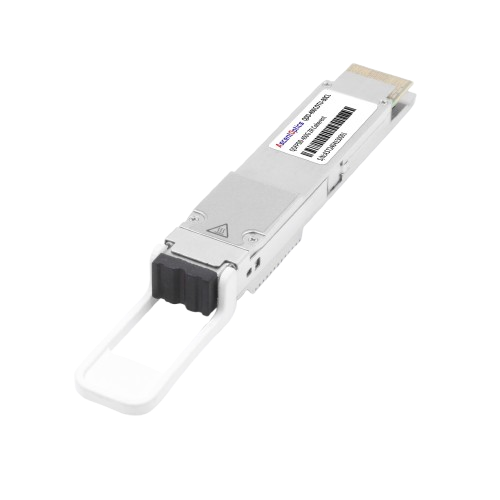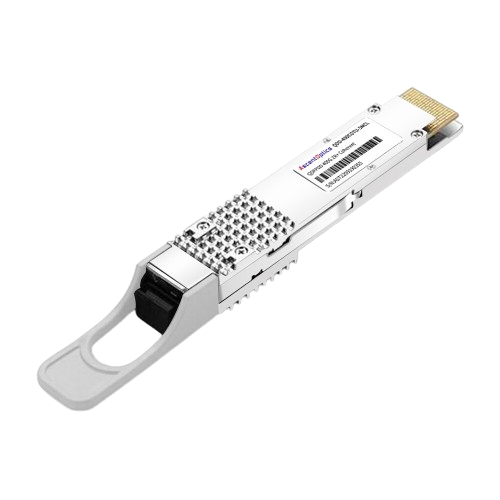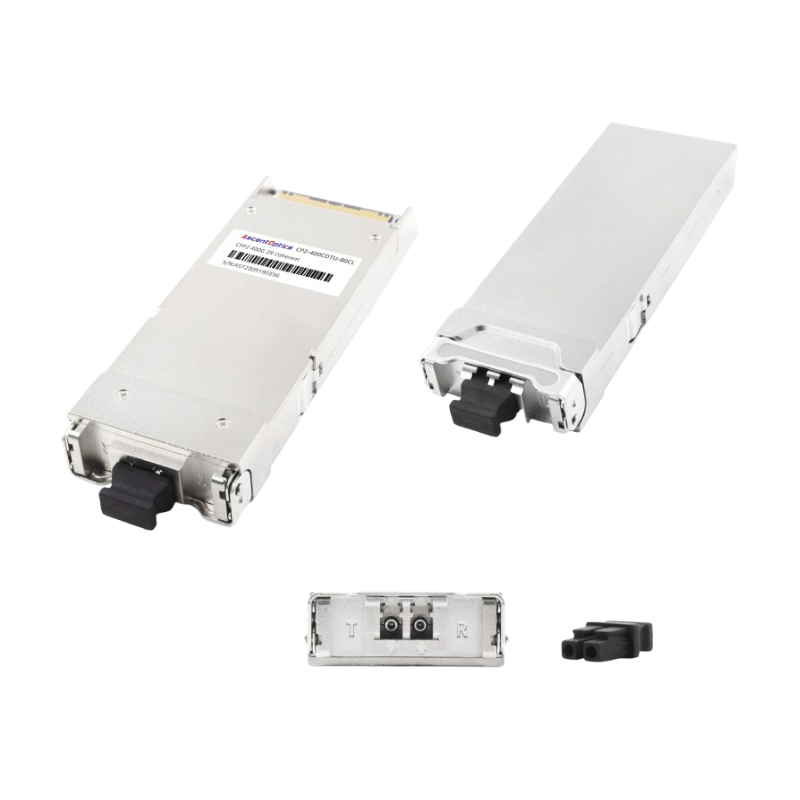In the digital age, optical communication technology is evolving at an astonishing speed, and coherent optical modules, as its core components, are leading the transformation from 5G to AI data centers. In 2025, with the explosive growth of global data traffic, the market size of coherent optical modules is expected to leap from $5 billion to a higher level, driving the industry towards higher bandwidth and lower power consumption. This article will delve into the basic concepts, types, advantages, and the latest development trends of coherent optical modules in 2025.
A coherent optical module (Coherent Optical Module) is an advanced optical transceiver that utilizes coherent optical communication technology to encode and transmit data by manipulating multi-dimensional information such as the amplitude, phase, and polarization of light. Unlike traditional intensity modulation/direct detection (IM-DD) modules, coherent modules can achieve higher spectral efficiency and longer transmission distances.
Its core principle is based on coherent light: light waves with the same frequency and stable phase, which can produce stable interference effects. This allows the module to compensate for dispersion, noise, and nonlinear effects in the optical fiber through a digital signal processor (DSP) at the receiving end, ensuring signal integrity. Typical components include tunable lasers, IQ modulators, coherent receivers, and DSP chips.
Coherent optical modules are mainly used in high-capacity, long-distance optical fiber transmission systems, such as backbone networks, data center interconnections, and 5G/6G backhaul. The main reason for choosing coherent optical modules is their significant advantages in performance, cost, and flexibility, especially in the era of dealing with explosive data growth (such as AI, cloud computing, and video streaming).

Coherent optical technology is the cornerstone of modern high-speed optical communications. By modulating and detecting both the amplitude, phase, and polarization of light, it achieves far greater bandwidth efficiency and transmission reach than traditional IM-DD systems. As AI, cloud computing, and 800G networks accelerate, coherent optics has become the foundation of backbone and data center interconnects.
First, coherent modules enable higher data rates with superior signal integrity. Using advanced modulation formats such as QPSK, 16QAM, and 64QAM, coherent systems deliver massive capacity within the same spectrum, enabling hundreds of gigabits per wavelength while lowering cost per bit.
Another key strength is long-distance transmission. With powerful DSP and FEC algorithms, coherent links automatically compensate for chromatic and polarization-mode dispersion, achieving stable, error-free transmission across thousands of kilometers without excessive optical amplification.
Intelligent signal processing enhances network visibility and reliability. Built-in DSP enables real-time link diagnostics, error correction, and self-calibration, simplifying operation and maintenance.
Finally, the rise of Silicon Photonics and Co-Packaged Optics (CPO) is driving coherent modules toward higher integration and lower power, enabling direct deployment in switches, servers, and AI compute nodes for truly optical-electronic convergence.
In short, coherent technology stands out for its high capacity, long reach, intelligence, scalability, and energy efficiency — redefining connectivity for next-generation AI infrastructure and high-performance computing networks.
Amid the rapid growth of AI, large language models, and high-performance computing (HPC), coherent optical modules have become the backbone of data center and backbone network evolution.
Today, the mainstream coherent market is dominated by 400G and 800G modules, with 1.6T technology emerging on the horizon.
The 400G coherent module remains the most widely deployed solution, balancing maturity, standardization, and cost efficiency. It has become the preferred choice for telecom operators and data center interconnects (DCI).
Key variants include:
1.Used for long-haul backbone networks with QPSK/16QAM modulation.
2.Compact and pluggable, widely adopted in cloud DCI networks.
3. Based on OIF 400ZR/OpenZR+ standards, supporting 80-600km transmission.
These modules are known for strong interoperability and flexible deployment, forming the backbone of today’s optical networks.

The 800G generation represents the forefront of coherent innovation, featuring XDR architecture and higher-order modulation (e.g., 64QAM) for an optimal balance of performance and efficiency.
Mainstream solutions include:
1. Integrated DSP and silicon photonics, ideal for AI clusters and metro-core networks.
2. Based on OpenZR+ 2.0, optimized for power efficiency and interoperability.
The arrival of these modules marks the dawn of the 800G coherent era.
The 1.6T coherent module is currently in early validation, leveraging Co-Packaged Optics (CPO) and Silicon Photonics (SiPh) to push integration and performance to new levels.
It will enable more precise computation and intelligent modulation, becoming the core interconnect for AI supercomputers and hyperscale data centers.
Coherent optical modules are emerging as the core connectivity foundation of the AI era. From the proven stability of 400G to the innovation of 800G and the upcoming 1.6T generation, coherent optics are redefining the boundaries of data center and HPC networking performance.
1. High Capacity and Efficiency: Supports DWDM and polarization multiplexing, with capacity reaching Tbps levels and spectral efficiency approaching the Shannon limit.
2.Long-Distance Transmission: Electronic compensation mechanisms reduce the need for relays, making it suitable for global backbone networks.
3.Flexibility: DSP enables dynamic adjustment of rates and formats, adapting to scenarios such as 5G-A and “East Data West Computing.”
4. Cost-Effectiveness: Although the initial investment is higher, it reduces network upgrade costs in the long term, especially in the market reshaped by AI.
Compared to non-coherent modules, coherent technology has become mainstream in 2025, driving the transformation of IP-over-DWDM architecture.
One of the most common use cases for coherent modules is Data Center Interconnect (DCI).
Cloud service providers such as AWS, Google Cloud, and Alibaba Cloud use 400G/800G QSFP-DD or OSFP DCO modules to connect distributed data centers. These coherent links deliver high-capacity transmission over tens to hundreds of kilometers, reducing fiber usage and simplifying network design.
In metro and long-haul transmission, coherent optics play a crucial role in telecom networks.
Modules such as 400G CFP2-DCO or 800G OSFP DCO maintain error-free transmission over 500–2000 km, thanks to powerful DSP and FEC compensation.
They enable flexible network topologies like rings and meshes, forming the backbone of next-generation optical transport systems.

As AI training scales to trillion-parameter models, coherent modules have become essential for interconnecting GPU clusters.
In HPC and AI factories, platforms like NVIDIA Quantum-X800 InfiniBand leverage 800G coherent DCO optics to deliver ultra-low latency and massive bandwidth, enabling distributed training and inference synchronization.
In cloud and edge computing, coherent optics provide flexible, scalable interconnections between regional nodes.
Using pluggable QSFP-DD or OSFP DCO modules, cloud providers can easily scale capacity without additional OTN gear, ensuring real-time data synchronization and low-latency edge access.
For submarine and intercontinental networks, coherent technology is indispensable. Modules such as CFP2-DCO and next-gen coherent engines, combined with advanced FEC and optical amplification, enable reliable transmission over 5000 km.
They serve as the foundation for global internet backbones and international data traffic.
Coherent optical modules are emerging as the core connectivity foundation of the AI era. From the proven stability of 400G to the innovation of 800G and the upcoming 1.6T generation, coherent optics are redefining the boundaries of data center and HPC networking performance.
Coherent optical modules are not only the cornerstone of optical communications but also the driving engine of the future digital economy. In 2025, as technology matures and the market expands, this field will embrace even more opportunities for innovation.